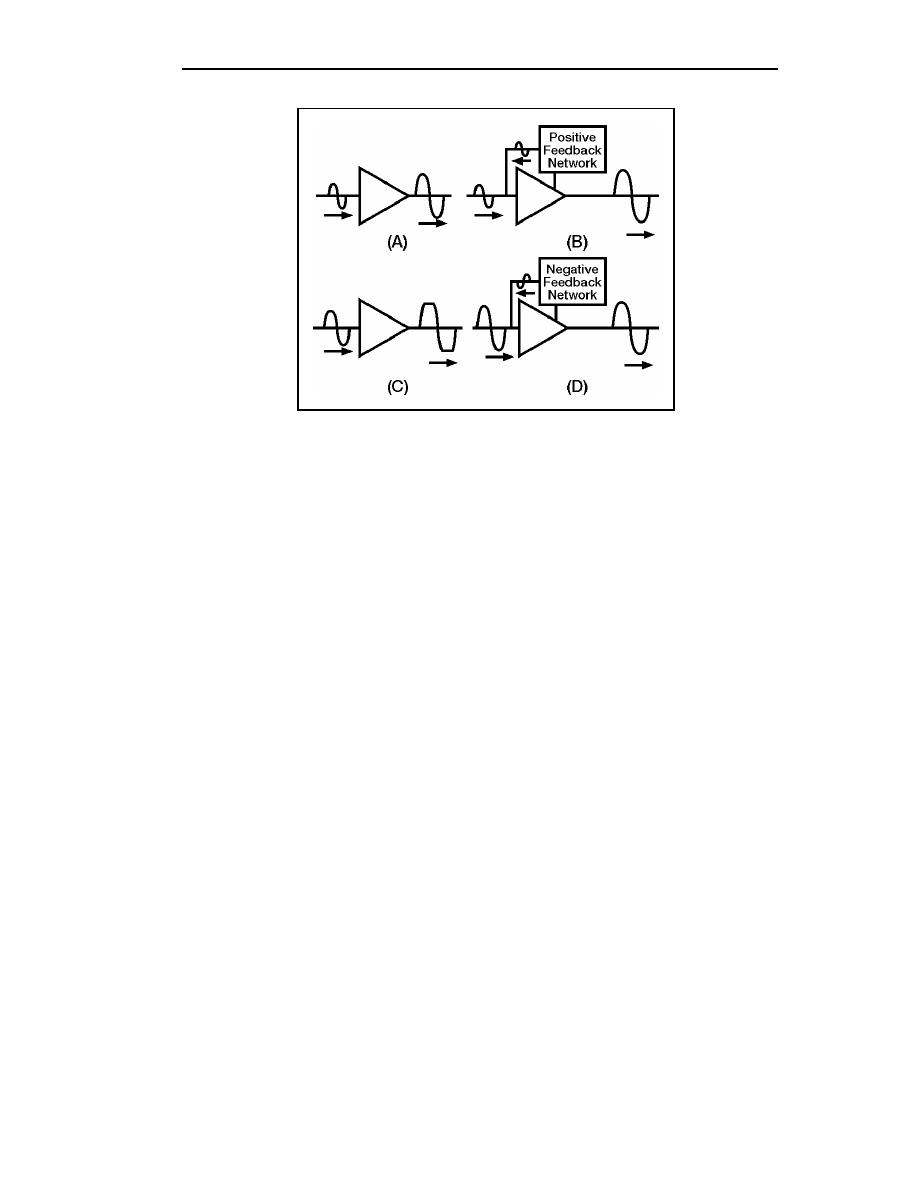
TC 9-62
Figure 5-16. Feedback Uses in Amplifiers
5-67. Depending on the reasons requiring the feedback, positive and negative feedback
are accomplished in many ways. The following are a few of the effects and methods of
accomplishing feedback.
Positive Feedback
5-68. Remember, positive feedback is accomplished by adding part of the output signal
in phase with the input signal. In a CB transistor amplifier, it is fairly simple to provide
positive feedback. Since the input and output signals are in phase, you need only couple
part of the output signal back to the input (see Figure 5-17).
5-69. The feedback network in this amplifier is made up of R2 and C2. The value of C2
should be large so that the capacitive reactance (XC) will be low and the capacitor will
couple the signal easily (this is also the case with the input and output coupling capacitors
C1 and C3). The resistive value of R2 should be large to limit the amount of feedback
signal and to ensure that the majority of the output signal goes on to the next stage through
C3.
5-70. A more common configuration for transistor amplifiers is the CE configuration.
Positive feedback is a little more difficult with this configuration because the input and
output signals are 180 out of phase. Positive feedback can be accomplished by feeding a
portion of the output signal of the second stage back to the input of the first stage (see
Figure 5-18).
5-71. Figure 5-18 shows that each stage of amplification has a 180 phase shift. This
means that the output signal of Q2 will be in phase with the input signal to Q1. A portion
of the output signal of Q2 is coupled back to the input of Q1 through the feedback network
of C3 and R3. R3 should have a large resistance to limit the amount of signal through the
feedback network. C3 should have a large capacitance so the capacitive reactance is low
and the capacitor will couple the signal easily.
5-18
TC 9-62
23 June 2005


 Previous Page
Previous Page
